The main components of flow cytometers and cell sorters are basically fluidics, optics (excitation and collection), an electronic network (detectors) and a. • the cells in the sample are accelerated and individually pass through a laser beam fit tifor interrogation.
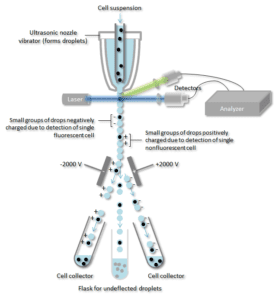
How Does Flow Cytometry Work Nanocellect
It provides a method for sorting a heterogeneous mixture of biological cells into two or more containers, one cell at a time, based upon the specific light scattering and fluorescent characteristics of each cell.
Facs flow cytometry principle. Flow cytometry is used for applications in immunology, pathology and medicine, and basic research. Flow cytometry has a multitude of applications in science, but the basic principle of operation is fairly simple: This is a scientific channel.
When a sample enters a flow cytometer, the particles are randomly Using facs a researcher can physically sort a heterogeneous mixture of cells into different populations. The optical system(light sensing) 3.
The principle of facs is simple: Reading this material and answering the questions at the end of each Facs is a derivative of flow cytometry that adds an exceptional degree of functionality.
This allows to sort cells based on physical, biochemical and antigenic traits. Mounted directly on the cytometer, the device includes a Each particle is analyzed for visible light scatter and one or multiple fluorescence parameters.
Flow cytometer fluidics • the cell sample is injected into a stream of sheath fluid. Principle of flow cytometry the basic principle of flow cytometry is the passage of cells in single file in front of a laser so they can be detected, counted and sorted. Label cells of interest with a marker such as an antibody pass the cells through a laser and detect which ones have the antibody
By using highly specific antibodies tagged with fluorescent dyes, a researcher can perform facs analysis and simultaneously gather data on, and sort a sample by a nearly limitless number of different parameters. The overall contributions of what is learned is what guides the. » this information can be used to individually sort or separate subpopulations of cells.
Flow cytometry and facs (fluorescence activated cell sorting) are distinctly different procedures though facs is a descendant procedure based upon flow cytometry protocols. Flow cytometry » flow cytometry is the technical process that allows for the individual measurements of cell fluorescence and light scattering. Working of a flow cytometer in the flow cytometer, particles are carried to the laser intercept in a fluid stream.
Principles of the flow cytometer flow cytometry basics guide | 3 1 principles of the flow cytometer fluidics system one of the fundamentals of flow cytometry is the ability to measure the properties of individual particles. A flow cytometer is generally composed of 3 components: Fluorescence activated cell sorting) 17:40.
Advancements in cell sorting technology are contributing in a big way to the molecular science landscape. Principle of flow cytometry the basic principle of flow cytometry is the passage of cells in single line in front of a laser so that they can be detected, counted and sorted. Cells (or other particles) pass in single file in front of a laser which allows them to be detected, counted, and sorted.
•by the laminar flow principle, the sample remains in the center of the sheath fluid. When particles pass through the laser intercept, they scatter laser light. Flow cytometry is a sophisticated instrument measuring multiple physical characteristics of a single cell such as size and granularity simultaneously as the cell flows in suspension through a measuring device.
The portion of the fluid stream where particles are located is called the sample core. The bd facs loader is an instrument option that allows walkaway sample introduction to further improve productivity. By utilizing highly specific antibodies labeled with fluorescent conjugates, facs analysis allows us to simultaneously collect data on, and sort a biological sample by a nearly limitless number of different parameters.
Flow cytometers gather information about cells by measuring visible and/or fluorescent light emissions. This process is performed at rates of thousands of cells per second. Cell components are fluorescently labelled and then excited by the laser to emit light at varying wavelengths.
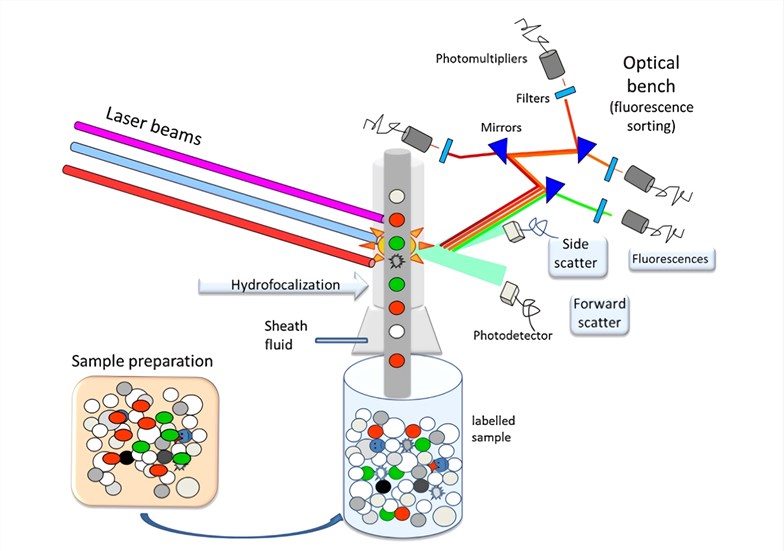
Flow Cytometry - Creative Biolabs
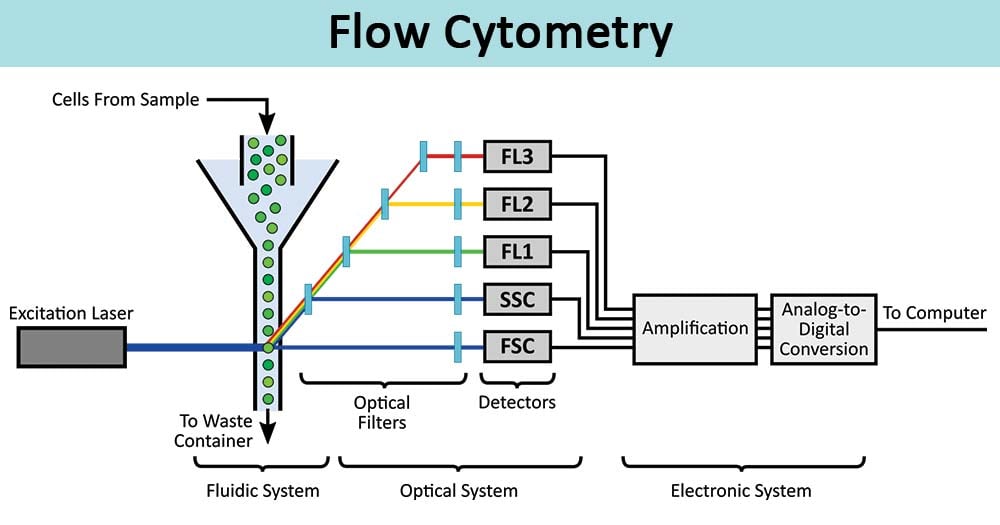
Flow Cytometry-definition Principle Parts Steps Types Uses
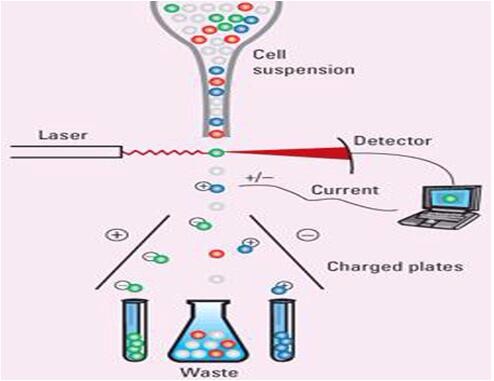
Flow Cytometry Service - Creative Proteomics
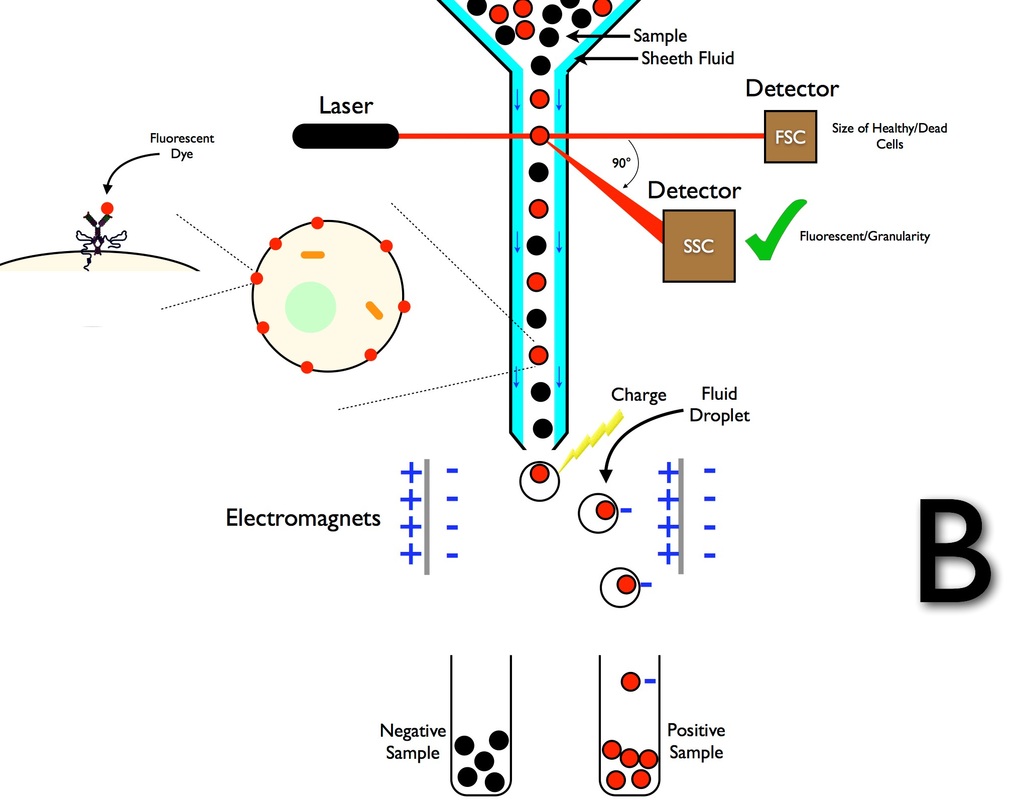
Flow Cytometry Principle How Facs Work - Shomus Biology

Flow Cytometry Basic Principles - Youtube

Aplikasi Flow Cytometry Untuk Stem Cells Terapi
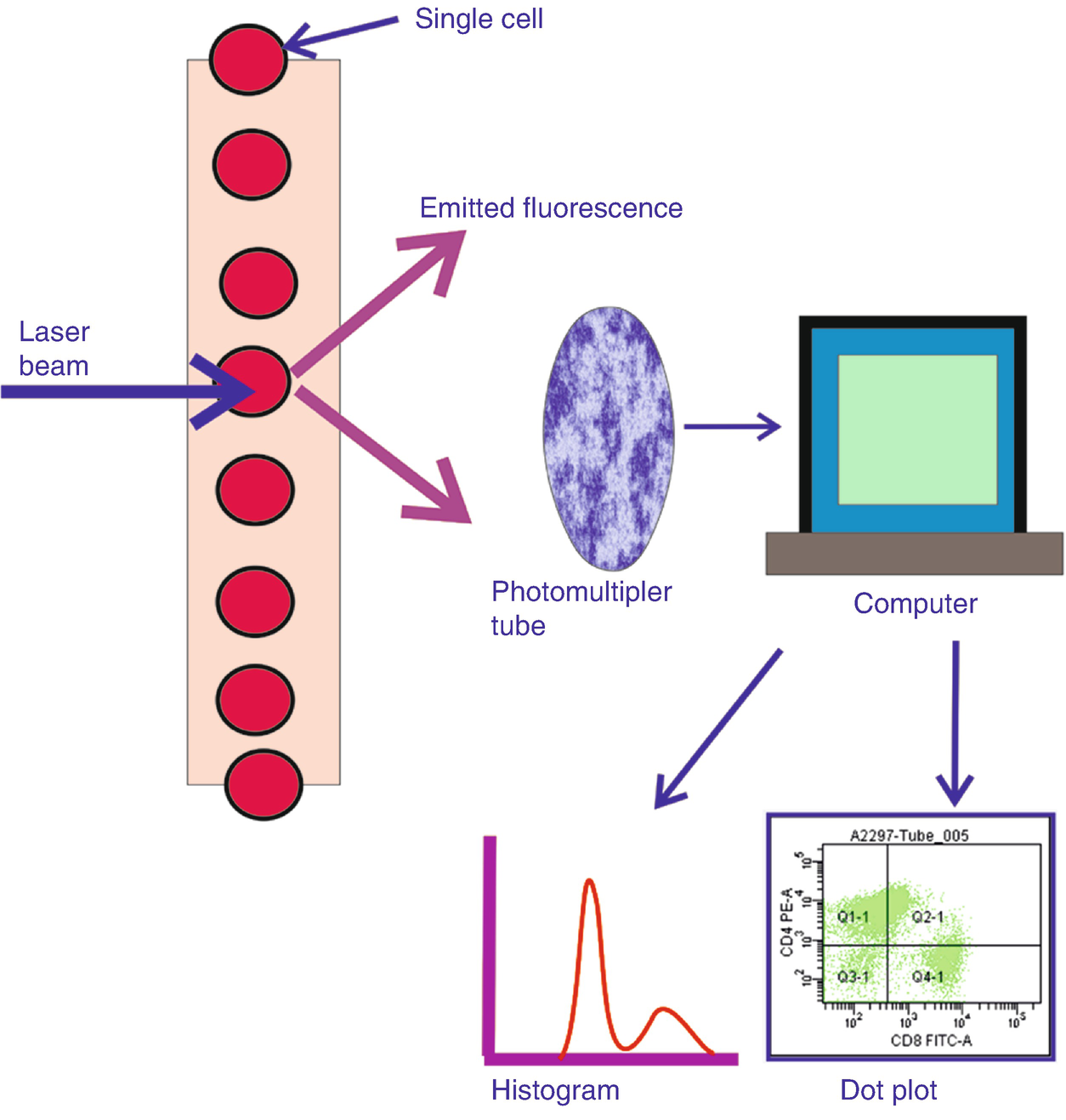
Flow Cytometry Basic Principles Procedure And Applications In Pathology Springerlink
Iitkacin

Flow Cytometry Protocols

Flow Cytometry - Youtube

Fundamentals Of Flow Cytometry Aat Bioquest
Iitkacin

The Principle Of Flow Cytometry And Facs 2- Facs Fluorescence Activated Cell Sorting - Youtube

Flow Cytometry Applications
Iitkacin

Principle Of A Conventional Flow Cytometer A Optical Signal Download Scientific Diagram

The Principle Of Flow Cytometry And Facs 1- Flow Cytometry - Youtube
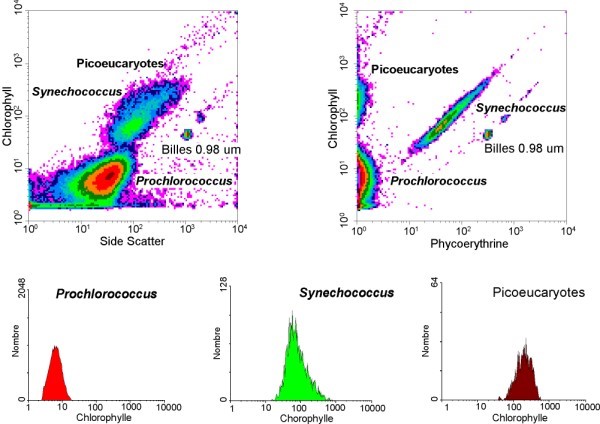
Flow Cytometry Principle How Facs Work - Shomus Biology

Flow Cytometry Introduction Abcam